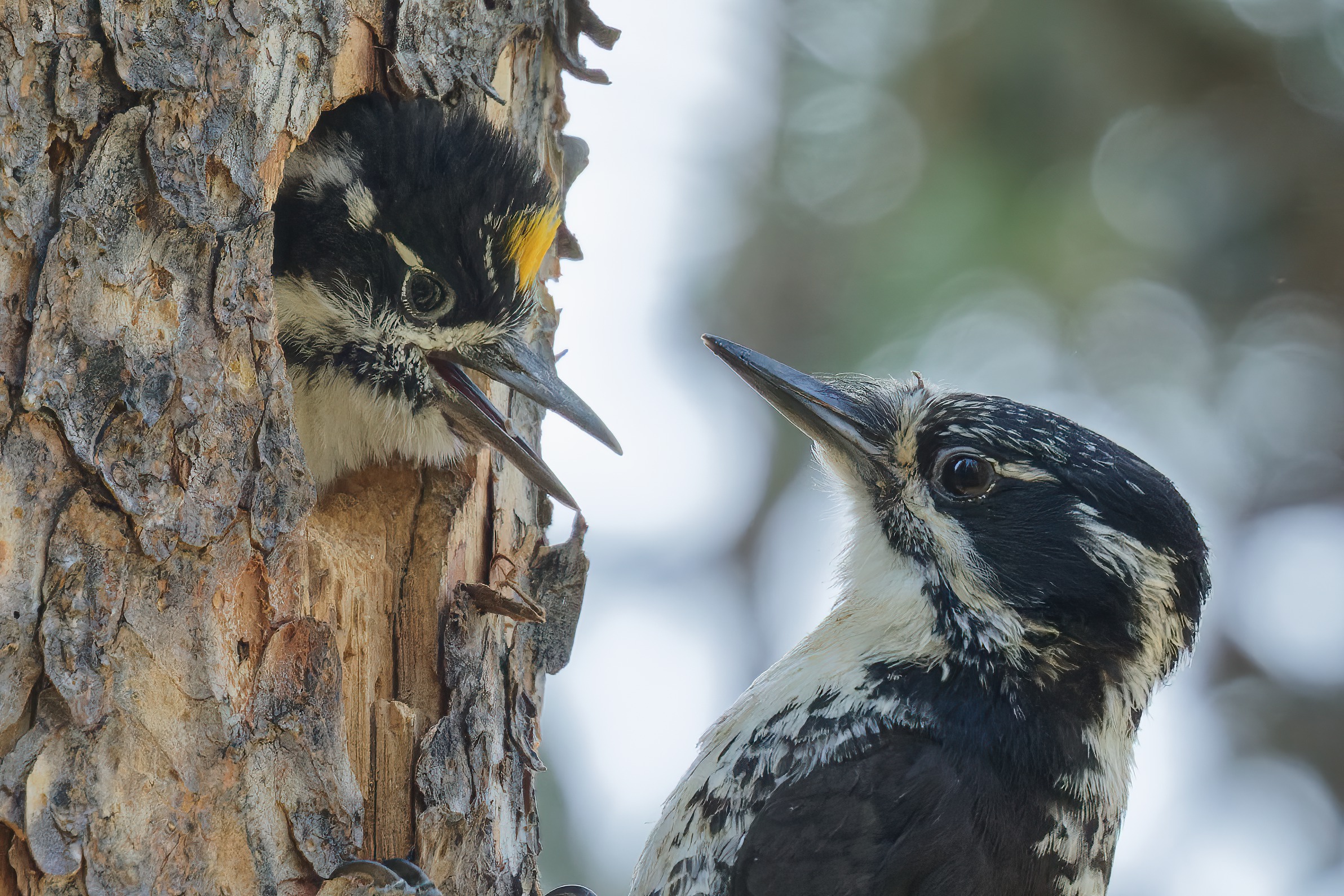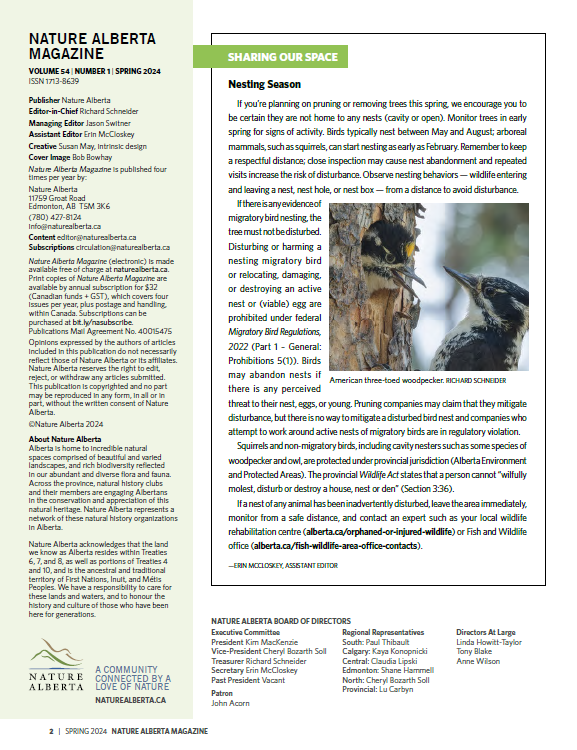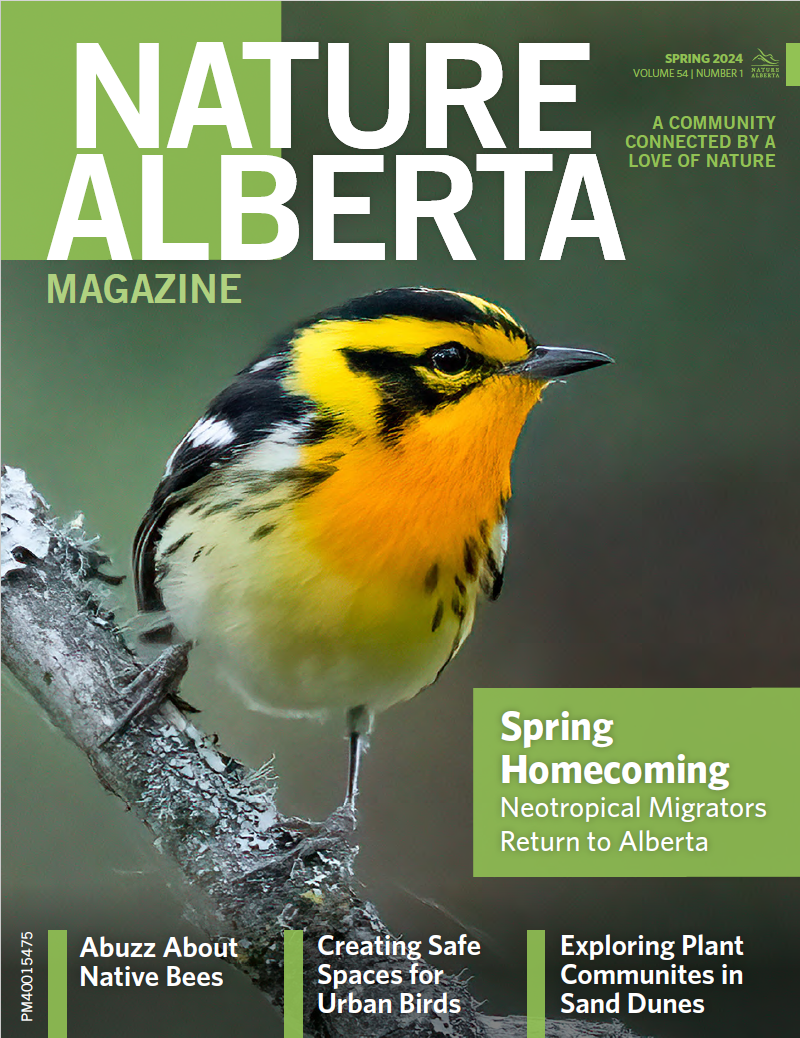Sharing Our Space: Nesting Season
22 April 2024

BY ERIN MCCLOSKEY
If you’re planning on pruning trees this spring, we encourage you to be certain they are not home to any nests (cavity or open). Monitor trees in early spring for signs of activity. Birds typically nest between May and August; arboreal mammals, such as squirrels, can start nesting as early as February. Remember to keep a respectful distance; close inspection may cause nest abandonment and repeated visits increase the risk of disturbance. Observing nesting behaviors — entering and leaving a nest, nest hole, or nest box — can be done from a distance with little or no disturbance.
If there is any evidence of migratory bird nesting, the tree must not be disturbed. Disturbing or harming a nesting migratory bird or relocating, damaging, or destroying an active nest or (viable) egg are prohibited under federal Migratory Bird Regulations, 2022 (Part 1 – General: Prohibitions 5(1)). Birds may abandon nests if there is any perceived threat to their nest, eggs, or young. Pruning companies may claim that they mitigate disturbance, but there is no way to mitigate a disturbed bird nest and companies who attempt to work around active nests of migratory birds are in regulatory violation.
Squirrels and non-migratory birds, including cavity nesters such as some species of woodpecker and owl, are protected under provincial jurisdiction (Alberta Environment and Protected Areas). The provincial Wildlife Act states that a person cannot “wilfully molest, disturb or destroy a house, nest or den” (Section 3:36).
If a nest of any animal has been inadvertently disturbed, leave the area immediately, monitor from a safe distance, and contact an expert such as your local wildlife rehabilitation centre (alberta.ca/orphaned-or-injured-wildlife) or Fish and Wildlife office (alberta.ca/fish-wildlife-area-office-contacts).
Read the Original Article for this Post
For a richer reading experience, view this article in the professionally designed online magazine with all images and graphs in place.
This article originally ran in the Spring 2024 issue of Nature Alberta Magazine (Vol. 54 | No. 1).


